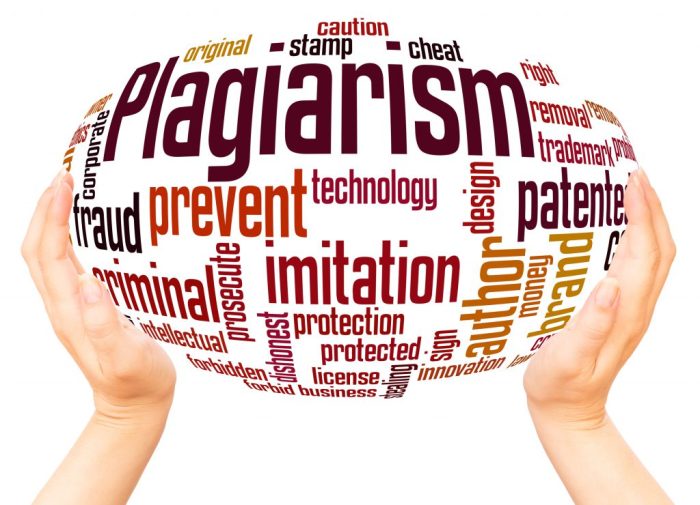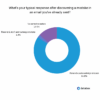Digital plagiarism detection content protects business by safeguarding intellectual property, preventing financial losses, and maintaining a positive brand image. This comprehensive guide explores the various forms of digital plagiarism, from copied text to images and code, and examines the damaging consequences for businesses. We’ll delve into practical strategies for preventing plagiarism, highlighting effective policies, training programs, and the critical role of detection software.
Understanding the different types of plagiarism, from blatant text copying to more subtle instances of repurposing content, is crucial for any business. The potential damage to reputation and legal ramifications can be severe. This article provides a framework for comprehending the risks and implementing robust preventative measures, ultimately fortifying your business’s digital presence and safeguarding its future.
Introduction to Digital Plagiarism Detection
Digital plagiarism, a pervasive issue in the digital age, involves presenting someone else’s work or ideas as one’s own. This can range from simple copying of text to more complex instances of mimicking another’s style or structure. The ease of copying and sharing information online has unfortunately exacerbated the problem, making detection crucial for maintaining academic integrity and professional ethics.Digital plagiarism detection tools have become essential tools for educators, researchers, and businesses.
These tools use various techniques to identify potential instances of plagiarism, helping to ensure that originality and intellectual property are protected.
Forms of Digital Plagiarism
Plagiarism takes many forms in the digital realm. Beyond simply copying and pasting text, it encompasses using someone else’s images, code, data, or even ideas. The deliberate or accidental use of another person’s work without proper attribution constitutes plagiarism.
- Text Copying: This is the most straightforward form, involving the direct duplication of written content without proper citation. This includes copying entire articles, paragraphs, or sentences, even if minor alterations are made.
- Image Appropriation: Using copyrighted images or graphics without permission or proper attribution constitutes plagiarism. This extends to modifying or slightly altering an image without giving credit to the original creator.
- Code Replication: In the realm of software development, copying and pasting code without citation is a form of plagiarism. This includes replicating the logic, structure, or algorithms of another developer’s work.
- Data Misappropriation: Copying data sets, research findings, or statistical analysis from another source without appropriate acknowledgment is considered plagiarism.
- Ideological Mimicry: Plagiarism can even extend to replicating another person’s overall argument, approach, or research methodology without providing due credit. This involves adopting the core concepts or structure of another’s work without properly referencing it.
Digital Plagiarism Detection Tools
These tools employ various methods to identify instances of digital plagiarism. Their effectiveness relies on algorithms, databases, and other technological approaches to compare submitted content against a vast collection of existing material.
Strong digital plagiarism detection content is crucial for protecting a business’s reputation. It’s not just about avoiding legal trouble; it’s also about building brand authenticity through community building brand authenticity through community. When your content is original and clearly yours, you foster trust with customers and potential clients. This authenticity, in turn, directly supports your brand’s success and reputation, making strong digital plagiarism detection tools a vital part of a thriving business strategy.
- Text Similarity Checkers: These tools compare submitted text against a massive database of existing documents, including published articles, books, websites, and student papers. They often calculate a similarity score, indicating the percentage of overlap with existing content.
- Image Recognition Software: Sophisticated image recognition tools can identify similarities between submitted images and a database of known images. This helps to detect instances of unauthorized image use.
- Code Similarity Detection Systems: Specialized tools are designed to compare programming code. These systems look for similarities in code structure, syntax, algorithms, and functions, helping to identify potential plagiarism in software projects.
- Academic Databases: Many universities and research institutions maintain databases of student work and published research. These databases can be used to quickly check for potential plagiarism. The content is indexed, and comparisons can be performed.
Examples of Plagiarism Detection Tools
Numerous tools are available for detecting digital plagiarism. These tools vary in their functionality, features, and pricing models.
Protecting your business content from digital plagiarism is crucial. A strong strategy, including rigorous content review, can significantly impact your bottom line. This involves understanding your audience and the competitive landscape. For instance, a thorough understanding of your website traffic and SEO performance, like that offered in a google analytics seo report , is vital. Ultimately, preventing plagiarism safeguards your brand reputation and your hard-earned intellectual property, which ultimately benefits your business.
- Turnitin: A widely used plagiarism detection tool for educational institutions, offering a comprehensive suite of features for checking student papers and assignments.
- Grammarly: While primarily a grammar and style checker, Grammarly can also identify instances of potential plagiarism. It compares submitted text against its database of resources and provides alerts.
- Copyscape: This tool is popular for website content and online writing, checking submitted content against web pages and other online resources. It is useful for checking original content before publishing it.
- Small Tools: This tool helps to compare content against the web, providing insights into potential duplication.
Business Impacts of Digital Plagiarism: Digital Plagiarism Detection Content Protects Business
Plagiarism, the act of presenting someone else’s work or ideas as one’s own, carries severe consequences for businesses. Beyond the ethical implications, plagiarism can significantly harm a company’s reputation, credibility, and bottom line. Understanding these impacts is crucial for any organization seeking to maintain a positive image and foster trust with customers and stakeholders.The negative consequences of plagiarism extend beyond simple ethical violations.
In the digital age, where information spreads rapidly and easily, a single act of plagiarism can have a disproportionately large impact on a company’s standing. A damaged reputation is difficult, and often expensive, to repair.
Negative Impact on Business Reputation
Plagiarism significantly erodes a company’s reputation, which is a valuable asset built over time. A history of plagiarism can taint the perception of a business, leading customers and partners to distrust its integrity. This loss of trust is not easily regained. Companies perceived as dishonest may struggle to attract and retain talent, investors, and customers.
Damage to Company Credibility and Brand Image
Plagiarism directly undermines a company’s credibility. If a company consistently misrepresents its work, customers will begin to question the quality and originality of its products and services. This can damage the overall brand image, impacting future business opportunities. The long-term effects can be devastating, as a tarnished reputation can be incredibly difficult and expensive to repair.
Legal Repercussions for Businesses
Businesses engaging in plagiarism face potential legal repercussions. Copyright infringement is a serious issue, and legal action can result in substantial fines, legal fees, and even injunctions. These legal battles can divert resources from core business activities and damage profitability. The legal consequences can be substantial, and the cost of defending against such actions can be prohibitive.
Examples of Companies Facing Consequences for Plagiarism
Numerous companies have faced consequences for plagiarism. One example involves a software company that was accused of copying code from a competitor, leading to a protracted legal battle and reputational damage. Another example involves a marketing agency that plagiarized content from other websites, resulting in a loss of client trust and a decline in business. These examples highlight the significant risks associated with plagiarism in the business world.
Comparison of Plagiarism Types and Business Impacts
| Plagiarism Type | Impact on Business Reputation | Legal Consequences |
|---|---|---|
| Text Copying | Loss of credibility, damage to reputation; loss of customer trust and potentially negative media attention. | Copyright infringement, potential lawsuits, hefty fines, injunctions. |
| Image Copying | Damage to brand image; loss of trust with customers who may perceive the company as dishonest. Negative media coverage is possible. | Copyright infringement, potential lawsuits, hefty fines, injunctions. |
| Code Copying | Damage to brand image; potential loss of client trust and damage to reputation; negative publicity. | Copyright infringement, potential lawsuits, hefty fines, injunctions; potential for class-action lawsuits in some cases. |
Strategies for Preventing Digital Plagiarism

Protecting your intellectual property and maintaining ethical standards in the digital age is crucial for both academic institutions and businesses. Digital plagiarism, the act of presenting someone else’s work or ideas as your own, can have severe consequences, ranging from academic sanctions to legal repercussions. Proactive measures are essential to combat this growing issue.Effective strategies for preventing plagiarism require a multifaceted approach that goes beyond simply detecting instances of copying.
Building a culture of ethical academic and professional conduct is paramount, which involves education, clear policies, and consistent enforcement. Implementing these measures fosters trust and transparency, safeguarding the integrity of the work produced.
Promoting Ethical Academic Practices
Establishing a strong foundation for ethical academic practices is vital, as it starts with a strong understanding of plagiarism and its consequences. Students and researchers need to understand what constitutes plagiarism, from direct copying to paraphrasing without proper citation. This involves comprehensive education on academic integrity, citation styles, and the importance of original thought. Encouraging critical thinking and proper research methodologies empowers individuals to produce unique work.
This approach cultivates a sense of responsibility for upholding academic standards and fosters an environment where original contributions are valued.
Implementing Plagiarism Prevention Policies
Business organizations must have clear policies regarding intellectual property rights, referencing materials, and acceptable use of information online. These policies should clearly define what constitutes plagiarism, outlining consequences for violations. The policies must be easily accessible to all employees, ensuring transparency and a common understanding. Furthermore, the policies should be regularly reviewed and updated to reflect current best practices and technological advancements.
These policies are vital for establishing a culture of integrity within the organization.
Examples of Plagiarism Prevention Training Programs for Employees
Effective plagiarism prevention training programs should cover a wide range of topics. These programs should include modules on identifying and avoiding plagiarism, appropriate citation techniques, and understanding copyright laws. Interactive exercises, case studies, and real-world scenarios can reinforce learning and make the training engaging and memorable. For instance, a training module could demonstrate how to properly cite online sources, including websites, articles, and social media posts.
The program should be regularly updated to reflect current digital trends and technologies. Training should be mandatory for all employees to ensure a consistent understanding of plagiarism policies.
Plagiarism Prevention Measures and Their Effectiveness
| Prevention Measure | Effectiveness | Cost |
|---|---|---|
| Clear Copyright Policies | High | Medium |
| Regular Training | High | Medium |
| Plagiarism Detection Software | Medium | High |
Clear copyright policies establish a baseline for understanding acceptable use and infringement. Regular training programs are effective in instilling a culture of academic integrity. Plagiarism detection software, while helpful, is not a foolproof solution, and its effectiveness depends on factors like the sophistication of the software and the type of plagiarism it’s designed to identify. A combination of these measures provides a more comprehensive and robust approach to plagiarism prevention.
The Role of Digital Plagiarism Detection in Protecting Businesses
Protecting your business’s intellectual property is paramount in today’s competitive landscape. Digital plagiarism, unfortunately, is a significant threat, and proactive measures are crucial to safeguard your brand, reputation, and bottom line. Robust plagiarism detection software is a vital tool in this fight, offering a multifaceted approach to preserving a company’s assets and competitive edge.Digital plagiarism detection tools are not simply a reactive measure; they are a proactive strategy to prevent and mitigate the risks associated with intellectual property theft.
Protecting your business content from digital plagiarism is crucial. Strong anti-plagiarism measures ensure your brand’s unique voice and ideas aren’t misappropriated. This is especially important when expanding into emerging markets, where leveraging SEO strategies like those detailed in the guide on using SEO to capture growth opportunities in emerging markets can be a game-changer. Ultimately, robust plagiarism detection safeguards your business’s reputation and intellectual property, no matter the market you’re targeting.
By identifying potential instances of plagiarism early, businesses can nip problems in the bud, avoiding costly repercussions.
Protecting Intellectual Property, Digital plagiarism detection content protects business
Plagiarism detection software works by comparing submitted work against a vast database of existing texts and resources. This comparison identifies similarities and potential instances of unauthorized use. This systematic approach helps businesses safeguard their original content, research, and creative works. The software helps establish originality and ownership, thus protecting the company’s intellectual property. Examples include articles, reports, marketing materials, and software code.
Preventing Financial Losses
Plagiarism can lead to significant financial losses. Copyright infringement, legal battles, and damage to reputation can all result in substantial financial burdens. By detecting and preventing plagiarism, businesses can avoid these costs. The upfront investment in plagiarism detection tools can save companies far greater sums in the long run by mitigating potential lawsuits and reputational damage. For instance, a company that manufactures unique designs could face considerable financial losses if their designs are copied without permission.
Plagiarism detection software can act as a deterrent and a crucial safeguard against such incidents.
Safeguarding Competitive Advantage
Original content and unique perspectives are essential for gaining a competitive edge. Plagiarism detection tools can help maintain the integrity of a company’s creative assets, preventing competitors from appropriating their ideas or research. This originality is a cornerstone of innovation, and plagiarism detection tools directly support this goal. For example, in the technology sector, unique algorithms and software code are often central to a company’s competitive edge.
Effective detection software helps maintain the integrity of these valuable assets.
Minimizing Reputational Damage
A plagiarism scandal can severely damage a company’s reputation. A lack of originality can erode public trust and lead to a decline in sales. Early detection of plagiarism can help mitigate this reputational damage by allowing businesses to address issues swiftly and transparently. A company’s public image can be swiftly tarnished if plagiarism is discovered, impacting credibility and customer loyalty.
Benefits of Using Plagiarism Detection Tools
Plagiarism detection tools offer a wide range of benefits for businesses. These tools are not just about catching plagiarism; they are about proactively safeguarding a company’s future. Using these tools is essential for maintaining a strong and reputable presence in the market.
- Enhanced Content Originality: The software helps ensure the originality of the content produced by employees or outsourced writers, safeguarding against potential plagiarism accusations.
- Reduced Legal Risks: Early detection of plagiarism significantly minimizes the risk of costly legal battles and copyright infringement issues.
- Preservation of Intellectual Property: By identifying and preventing plagiarism, businesses can effectively protect their valuable intellectual property assets, from research to creative content.
- Protection of Brand Reputation: Maintaining originality helps protect a company’s brand image and reputation, building customer trust and loyalty.
- Increased Efficiency: By preventing plagiarism, businesses can avoid the time and resources needed to address potential issues, ensuring productivity.
- Competitive Advantage: Originality is key in today’s competitive landscape. Using plagiarism detection tools helps maintain a competitive advantage by protecting unique content.
Case Studies
Protecting intellectual property in today’s digital landscape is crucial for businesses of all sizes. Digital plagiarism detection tools have proven invaluable in safeguarding original content and maintaining a strong brand reputation. These tools can identify instances of unauthorized use, allowing businesses to take swift action and prevent reputational damage.Effective use of these tools not only helps maintain a strong brand image but also strengthens the overall business strategy by deterring plagiarism and fostering a culture of originality.
The following case studies highlight successful applications of digital plagiarism detection, showcasing tangible benefits for businesses across various industries.
Examples of Successful Plagiarism Detection
Businesses often find themselves facing the challenge of protecting their intellectual property in the digital age. Digital plagiarism detection tools offer a valuable solution to this problem. These tools help identify instances of unauthorized use, enabling swift action and the prevention of reputational damage.
- Software Development Company: A software development company noticed a significant increase in the number of online articles plagiarizing their code snippets and documentation. Using a plagiarism detection tool, they identified several instances of unauthorized use and were able to take action to stop the infringement. This swift response not only protected their intellectual property but also maintained their company’s reputation as innovators and creators in the software industry.
- Educational Institution: An educational institution noticed an increase in plagiarism within student assignments. Implementing a plagiarism detection tool helped identify and address instances of academic dishonesty, fostering an environment of academic integrity and upholding the institution’s commitment to quality education. This proactive approach prevented the spread of plagiarism and preserved the reputation of the institution for providing high-quality education.
- Marketing Agency: A marketing agency observed competitors using their creative content without authorization. By using a digital plagiarism detection tool, the agency identified instances of plagiarism, leading to a swift response and the protection of their valuable marketing materials. This action reinforced the agency’s commitment to originality and prevented any damage to their reputation as a creative and innovative marketing firm.
Benefits of Detection and Prevention
Businesses that actively detect and prevent plagiarism reap numerous benefits. These extend beyond just legal protections; they encompass strengthened brand reputation, increased trust, and enhanced efficiency.
- Enhanced Brand Reputation: Businesses that maintain a strong commitment to original content cultivate a positive brand image. By actively preventing plagiarism, they demonstrate a dedication to creativity and innovation. This, in turn, fosters trust and loyalty among customers and stakeholders, resulting in long-term brand value.
- Increased Efficiency: Digital plagiarism detection tools can automate the process of identifying potential plagiarism. This frees up valuable time and resources that can be redirected to core business activities. The efficiency gain from preventing plagiarism through proactive measures leads to a more focused and productive business environment.
- Legal Protection: Plagiarism detection tools provide evidence of intellectual property infringement. This evidence is crucial in legal proceedings, enabling businesses to effectively protect their original work and deter further instances of plagiarism.
Future Trends in Digital Plagiarism Detection
The digital landscape is constantly evolving, and with it, so are the methods of perpetrating and detecting plagiarism. The increasing sophistication of AI and machine learning is dramatically impacting the tools available to combat this issue, leading to a future where plagiarism detection is more accurate and pervasive. This shift necessitates a proactive understanding of the evolving techniques and challenges in the field.The future of plagiarism detection will likely be characterized by a combination of advancements in technology and a growing awareness of the need for ethical academic and professional practices.
This means a move beyond simple matching to more nuanced analyses that can identify the subtle signs of plagiarism, like paraphrasing that’s too close to the original text, or the repurposing of ideas without proper attribution.
Emergence of AI-Powered Plagiarism Detection
AI is revolutionizing the way we approach plagiarism detection. Sophisticated algorithms can analyze text for patterns, stylistic nuances, and even the subtle traces of paraphrasing that traditional methods miss. Deep learning models are capable of identifying plagiarism across a wider range of sources and styles. This means that even subtle attempts at mimicking another’s work will be much harder to conceal.
Examples of these methods include identifying the unique writing style of an author and comparing it across different documents.
New Tools and Techniques for Identification
Beyond AI, new techniques are emerging to identify plagiarism in various formats. This includes the analysis of visual content, such as images and videos, for instances of copyright infringement. Tools will likely analyze the structure of the content, such as the arrangement of paragraphs, citations, and the logical flow of arguments, to detect subtle but significant similarities. The future of plagiarism detection also involves using semantic analysis to identify when the core ideas and arguments of a piece of work are copied or paraphrased, even if the phrasing is different.
Evolving Challenges in Detecting Different Types of Plagiarism
As plagiarism detection methods become more sophisticated, the methods used to commit plagiarism also evolve. This includes the use of AI-generated content, which can be used to create convincing but still plagiarized work. Detecting plagiarism in non-textual formats, such as code, audio, and video, will also pose a significant challenge. Developing new methods to detect these types of plagiarism is crucial.
Further, the issue of plagiarism in collaborative work, where multiple authors contribute to a single piece, needs new strategies to distinguish between genuine collaboration and plagiarism.
A Future Scenario of Near-Elimination of Plagiarism
A future scenario where plagiarism is nearly eliminated could involve a combination of factors. This includes a culture of academic integrity and ethical responsibility that places a high value on original thought and proper attribution. Integrated AI plagiarism detection tools would be universally available in educational institutions and professional settings. This could result in a system where any form of plagiarism is detected, flagged, and handled effectively and efficiently.
The future may see the use of blockchain technology to authenticate and track the originality of work. This system could also potentially include rewards for original thought and ideas.
Content Examples of Plagiarized Content
Plagiarism, the act of presenting someone else’s work or ideas as your own, is a serious issue in today’s digital world. Understanding the various forms of plagiarism, including text, images, and code, is crucial for businesses to maintain ethical practices and avoid legal repercussions. This section delves into practical examples and characteristics of plagiarized content across different mediums.Plagiarized content can take many forms, from verbatim copying to subtly altering original material.
Recognizing these forms is vital for establishing a robust anti-plagiarism strategy within any organization. This understanding empowers individuals and institutions to uphold intellectual property rights and foster an environment of academic and professional integrity.
Text Plagiarism
Text plagiarism involves presenting someone else’s written work as your own. This can range from direct copying to paraphrasing without proper citation.
- Example: Instead of writing an original analysis of a company’s marketing strategy, a student might directly copy a section from a published article about the same strategy, without attributing the source.
- Characteristics: Lack of citation, verbatim copying, significant overlap in phrasing and sentence structure with the original source, and improper paraphrasing.
- Methods: Copying and pasting text directly from online sources, failing to cite sources properly, and using paraphrasing tools without proper understanding or acknowledgment of the original author’s work.
- Identification: Careful comparison of the suspected text with potential sources, including the use of plagiarism detection software.
Image Plagiarism
Image plagiarism occurs when someone uses another’s artwork, photograph, or graphic design without permission or attribution. This includes both the use of the entire image and the use of elements from it.
- Example: A graphic designer creates a logo by taking an existing image and altering it slightly, but fails to credit the original creator. This alteration does not remove the plagiarism.
- Characteristics: Lack of proper licensing or permission, similarity to an existing image in composition or design, and failure to acknowledge the original source.
- Methods: Downloading images from unlicensed websites, using image editing software to slightly alter existing images, and using stock images without acquiring proper usage rights.
- Identification: Comparison with existing images and databases, evaluating the artistic style, and confirming usage rights.
Code Plagiarism
Code plagiarism is the act of copying and using another person’s computer code without proper attribution. This can be as simple as copying lines of code or more complex, such as reproducing the logic and structure of an entire program.
- Example: A student submits a programming assignment that closely mirrors the code from an online tutorial, without proper citation.
- Characteristics: Significant similarity in structure and logic to existing code, identical or highly similar code blocks, and absence of proper attribution.
- Methods: Copying code directly from websites, forums, or other sources, failing to cite the source of the code, and using code snippets without appropriate acknowledgment.
- Identification: Using plagiarism detection tools specifically designed for code, and comparing the suspected code to potential sources.
| Content Type | Example | Characteristics of Plagiarism |
|---|---|---|
| Text | A student submits an essay on the history of the printing press, which is almost identical to an article published online without any citation. | Lack of citation, verbatim copying, significant overlap in phrasing and sentence structure with the original source, and improper paraphrasing. |
| Image | A website uses a stock photo of a cityscape without obtaining the necessary license or giving credit to the photographer. | Lack of proper licensing or permission, similarity to an existing image in composition or design, and failure to acknowledge the original source. |
| Code | A programmer submits a program for a competition that is almost identical to a publicly available codebase on GitHub without proper citation. | Significant similarity in structure and logic to existing code, identical or highly similar code blocks, and absence of proper attribution. |
Wrap-Up

In conclusion, digital plagiarism detection content protects business by acting as a vital shield against the damaging consequences of intellectual property theft. By implementing preventative measures and utilizing effective detection tools, companies can safeguard their reputation, avoid legal entanglements, and maintain a competitive edge. The future of digital plagiarism detection is poised for innovation, with new technologies constantly emerging to combat the evolving forms of plagiarism.
This proactive approach to intellectual property protection is essential for sustainable business growth and success in the digital age.






